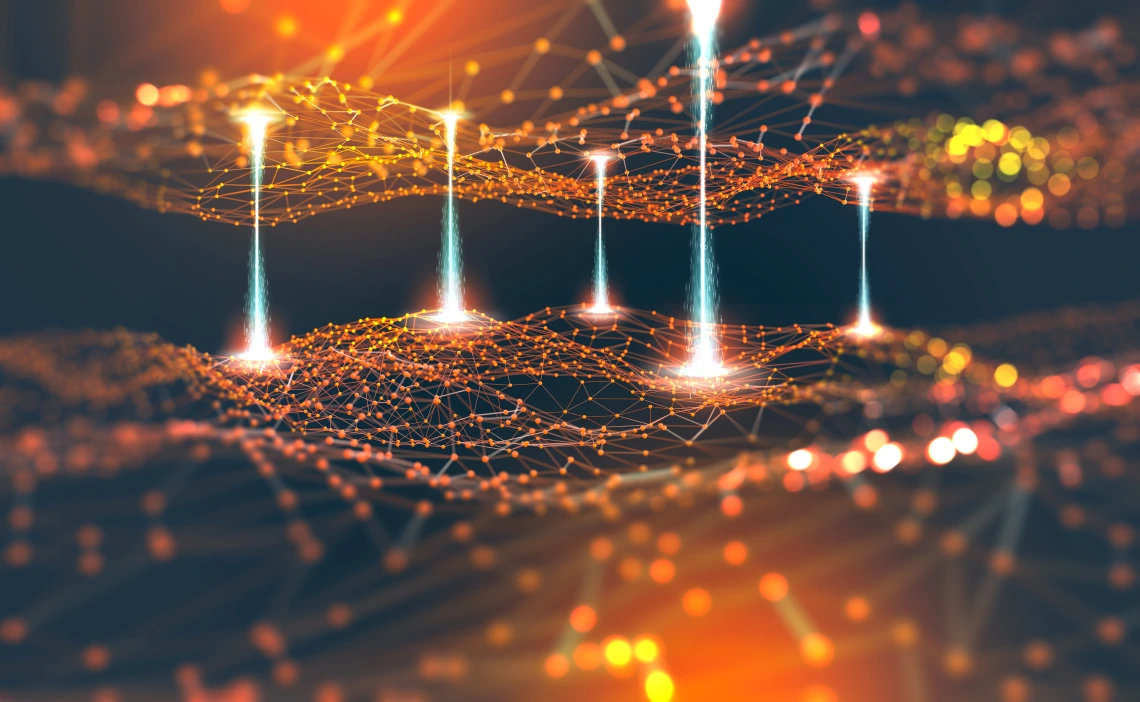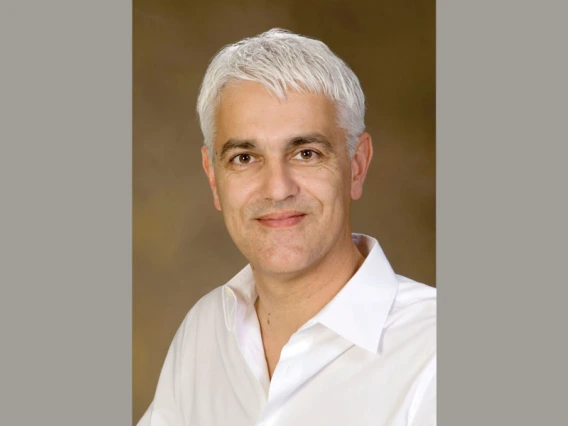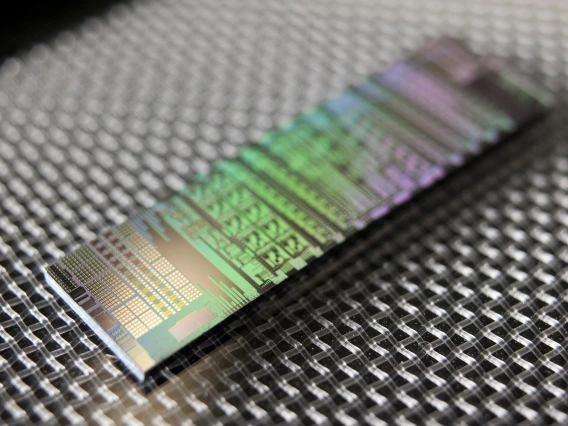Researchers Work to Ensure Accurate Decoding in Fragile Quantum States
An electrical and computer engineer at the University of Arizona is developing error correction technology for high-speed quantum computing.

No description provided
When computers share information with one another, the information gets encoded into bits, then decoded back into its original form. In the process, pieces of the information sometimes get scrambled, or lost. As a simplified example, an improperly decoded email that says "I am now sending you the money" could arrive at its destination saying "I am not sending you the money."
Another example: When you save a document on your computer, you expect it to hold the same information when you reopen it. And, if you ask a computer to solve the equation 2+2, you need to trust it will spit out 4. This is even more important for complex equations that you can't calculate yourself, like the values for x, y and z in the Diophantine equation x3 + y3 + z3 = 42.
Bane Vasić, a professor of electrical and computer engineering and director of the Error Correction Laboratory in the University of Arizona College of Engineering, specializes in error correction codes, which ensure that the information shared and calculated by computers is properly decoded before arriving at its destination. He also studies fault tolerance, or the ability of a computer or network of computers to continue functioning when one or more of its components fails.
Vasić has been instrumental in developing a class of error correction codes – called low-density parity check codes, or LDPC codes – used widely in classical communications and data storage. In a project funded by $1.1 million from the National Science Foundation, Vasić is partnering with Saikat Guha in the James C. Wyant College of Optical Sciences to test the feasibility of quantum LDPC codes in quantum computers for the first time.
Applying a Classical Technique to Quantum Networks
While x3 + y3 + z3 = 42 is a complex equation, it is possible to solve for x, y and z with classical computing. In fact, in 2019 a group of scientists used a network of classical computers to do just that. It took more than a million hours of calculation. Quantum computing has the potential to solve equations like this one in just seconds.
"Through quantum computing, we will be able to analyze very complicated phenomena, and to solve problems that are not solvable by classical computers. And this will be done very fast," Vasić said. "There are applications in biology; medicine; finances; the simulation of physical, chemical and biological systems; the discovery of new materials; and the design of molecules."
How is this possible? Classical computing stores information in units called bits, which exist as either 0s or 1s. Quantum computing uses units called qubits, which can exist in multiple states simultaneously. The superposition of states is what allows for ultra-speedy, futuristic computing. However, as qubits are physically realized as subatomic particles, this state is very fragile to create and maintain, making qubits more prone to error, or decoherence, than bits.
Theoretical physicists now speculate that qubits are also what make up space-time, or the fabric of the universe. And recent research has indicated that quantum error correction explains why space-time is so robust, despite its fragile building blocks.
In fact, qubits are so sensitive that the very act of measuring them can cause change. Presently, quantum error correction involves first carefully observing the qubits and recording findings as classical information. Then, a classical computer calculates what is wrong, and scientists transfer the error correction information to the quantum system.
"In this project, we are investigating methods where we don't leave the quantum world, so all of the operations will also be quantum," Vasić said. "We want to explore whether decoding can be done by processing quantum information."
Passing Messages to Mitigate Noise
Today's computers are made up of billions of basic building blocks called logic gates. These gates apply different operations to binary information being processed. For example, one of the simplest kinds of gates is a NOT gate, which transforms bits into their opposites by intaking 0s and outputting 1s and vice versa. However, sometimes signal interference and noise cause gates to make mistakes, which leads to incorrect results. Quantum gates perform more versatile and exotic operations than their classical relatives do, but are noisier and more prone to error.
Error correcting codes entangle qubits in a very specific way so that qubits stabilize each other. Vasić's decoders allow qubits to pass information about one another back and forth. Similar message passing algorithms are used in artificial intelligence. None of the individual bits have a complete knowledge of value of other bits, but together – through message passing – they collectively learn if there are errors and exactly which bits they are located in. This new project focuses on developing a quantum version of such artificial intelligence algorithms.
"The biggest advantage of LDPC codes is that they support these kinds of message-passing algorithms, which are fault tolerant," Vasić said. "In quantum systems, we have to have fault tolerance, because, due to the higher level of noise, quantum gates are orders of magnitude noisier and more unreliable than classical logic gates."
Vasić and several other engineering faculty members are also part of the newly created Center for Quantum Networks, a five-year, $26 million NSF Engineering Research Center led by the University of Arizona. The center, directed by Guha, aims to lay the foundations for the quantum internet, and error correction represents a critical piece of the venture.
"This is a missing piece to realize quantum computers and networks," Vasić said. "These quantum LDPC codes are the next generation of codes that will be used, but we have to develop algorithms to decode efficiently and fault-tolerantly."
"With the recent hiring of several new faculty members specializing in quantum engineering, the college and university are positioning themselves at the forefront of this field," said David W. Hahn, Craig M. Berge dean of the College of Engineering. "We are fortunate to have researchers like Dr. Vasić bring their experience and invaluable expertise to the table."




